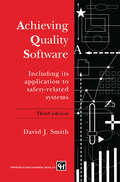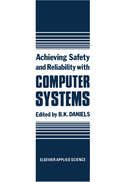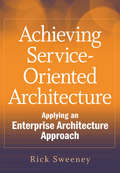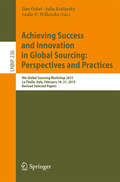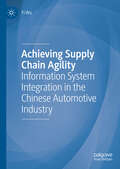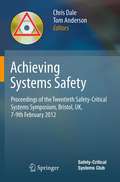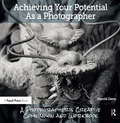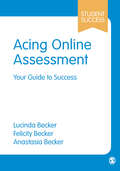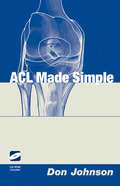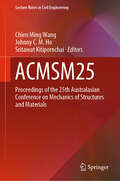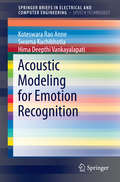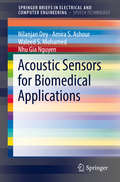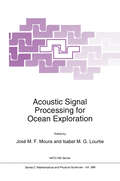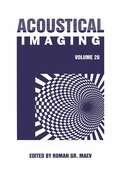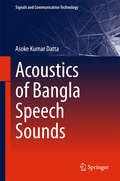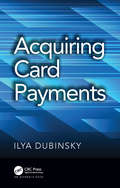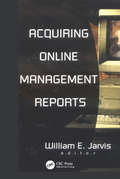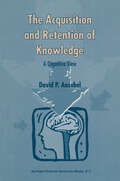- Table View
- List View
Achieving Quality Software: Including Its Application to Safety-Related Systems
by D.J. SmithThe rapid growth in use of programmable technology, in nearly all sectors of Engineering, is a well-known established trend and one which there is every reason to believe will continue into the foreseeable future. The drivers of this trend include cost, flexibility, rich functionality and certain reliability and safety advantages. However, as explained in this book, these advantages have to be carefully weighed against a number of dis advantages which, amongst other things, have fundamental implications for reliability and safety. Ideally, a programmable system would be viewed as a fusion of hardware, software and user (or 'skinware'), operating under a set of environmental conditions. To date, such a unifying model does not exist and so hardware, software and human factors are still considered largely as three separate disciplines, albeit with certain interdependencies. Established techniques are available which enable the engineer to develop systems comprising purely hardware components to a prescribed reliability and performance. Software, however, is fundamentally different in a number of ways, and does not lend itself to equivalent analysis. A major problem with software is its poor 'visibility', and consequently the great difficulty in understanding and predicting its behaviour in all cir cumstances. This results in the ever-present software design flaws, or 'bugs', which have plagued the software industry from its beginnings.
Achieving Safety and Reliability with Computer Systems
by B. K. DanielsThe safe operation of computer systems, in both their software and hardware continues to be a key issue in many real time applications, when people, environment, investment or goodwill can be at risk. Such applications include the monitoring and control of high energy processes, of nuclear and chemical plants, of factory automation, of transportation systems, or funds transfer and of communication and information systems. This book represents the proceedings of the 1987 Safety and Reliability Society Symposium held in Altrincham, UK, 11-12 November 1987. It is thus part of the series of proceedings for Society Events, which in previous years have not addressed the topic of the Safety and Reliability of Computer Systems. The book is also part of another series of reports, and is closely related to the Elsevier Book "Safety and Reliability of Programmable Electronic Systems" which I edited in 1986, and the series of workshops known as SAFECOMP held in 1979, 1982, 1983, 1985, 1986 which are referenced in some of the papers. The structure of the book represents the structure of the Symposium itself. The session titles, and the papers as selected represent the current practice in many industries. The trend is towards more industrial usage of Formal Methods, and tools to support these methods, whilst continuing to make best use of Software Engineering, Safety and Reliability Assessment, and accumulated experience.
Achieving Service-Oriented Architecture: Applying an Enterprise Architecture Approach
by Rick SweeneyA complete, comprehensive methodology and framework for adopting and managing a successful service oriented architecture environment Achieving Service-Oriented Architecture helps to set up an SOA Architecture Practice defining the policies, procedures, and standards that apply not just to IT developers but to the entire corporation as it relates to business applications. Why a new architectural approach is necessary for your business to achieve all the value SOA has to offer Focuses on setting up an enterprise architecture practice for service-oriented architecture Discusses the implementation and governance processes for SOA Defines and describes an overall architectural framework for managing SOA assets at an enterprise architecture level Shows how to set up and run an SOA Enterprise Architecture Practice using the methodology and framework presented Defining how an Architecture Practice can transform itself and your corporation to maximize the benefits of the SOA approach, Achieving Service-Oriented Architecture provides a pragmatic enterprise architecture approach and framework for implementing and managing service oriented architecture from a business organization and business practices perspective. Note: CD-ROM/DVD and other supplementary materials are not included as part of eBook file.
Achieving Service-Oriented Architecture: Applying an Enterprise Architecture Approach
by Rick SweeneyA complete, comprehensive methodology and framework for adopting and managing a successful service oriented architecture environment Achieving Service-Oriented Architecture helps to set up an SOA Architecture Practice defining the policies, procedures, and standards that apply not just to IT developers but to the entire corporation as it relates to business applications. Why a new architectural approach is necessary for your business to achieve all the value SOA has to offer Focuses on setting up an enterprise architecture practice for service-oriented architecture Discusses the implementation and governance processes for SOA Defines and describes an overall architectural framework for managing SOA assets at an enterprise architecture level Shows how to set up and run an SOA Enterprise Architecture Practice using the methodology and framework presented Defining how an Architecture Practice can transform itself and your corporation to maximize the benefits of the SOA approach, Achieving Service-Oriented Architecture provides a pragmatic enterprise architecture approach and framework for implementing and managing service oriented architecture from a business organization and business practices perspective. Note: CD-ROM/DVD and other supplementary materials are not included as part of eBook file.
Achieving Success and Innovation in Global Sourcing: 9th Global Sourcing Workshop 2015, La Thuile, Italy, February 18-21, 2015, Revised Selected Papers (Lecture Notes in Business Information Processing #236)
by Ilan Oshri Julia Kotlarsky Leslie P. WillcocksThis book constitutes revised selected papers from the 9th international Global Sourcing Workshop 2015, held in La Thuile, Italy, in February 2015. The 14 contributions included were carefully reviewed and selected from 40 submissions. The book offers a review of the key topics in outsourcing and offshoring, populated with practical frameworks that serve as a tool kit to students and managers. The range of topics covered is wide and diverse, but predominately focused on how to achieve success and innovation in global sourcing. The topics discussed combine theoretical and practical insights regarding challenges that industry leaders, policy makers, and professionals face. Case studies from various organizations, industries and countries are used extensively throughout the book to illustrate results and findings.
Achieving Supply Chain Agility: Information System Integration in the Chinese Automotive Industry
by Yi WuThis book identifies factors of information system (IS) integration that influence supply chain agility and illustrates how IS integration can achieve greater supply chain agility. Also considering the consequent operational impacts that arise from IS-enabled supply chain agility, the author presents real-life examples through interviews and surveys to explore how IS integrations affect supply chain agility in the context of the Chinese automotive industry. The ability to swiftly respond to competitive challenges is a key element in industry 4.0 and organisations with agile supply chains are better prepared to respond to uncertainties and changes. This book develops and presents guidelines on the deployment of information system integration in order to achieve efficient agile supply chains.
Achieving Systems Safety: Proceedings of the Twentieth Safety-Critical Systems Symposium, Bristol, UK, 7-9th February 2012
by Chris Dale Tom AndersonAchieving Systems Safety contains papers presented at the twentieth annual Safety-critical Systems Symposium, held in Bristol, UK, in February 2012.The Symposium is for engineers, managers and academics in the field of system safety, across all industry sectors, so the papers making up this volume offer a wide-ranging coverage of current safety topics, and a blend of academic research and industrial experience. They include both recent developments in the field and discussion of open issues that will shape future progress.The topics covered by the 20 papers in this volume include vulnerabilities in global navigation satellite systems; safety culture and community; transport safety; cyber-attacks on safety-critical systems; improving our approach to systems safety; accidents; assessment, validation and testing; safety standards and safety levels.The book will be of interest to both academics and practitioners working in the safety-critical systems arena.
Achieving Your Potential As A Photographer: A Creative Companion and Workbook
by Harold DavisComing from the perspective that true inspiration and great image making are at the core of any high-level photographic endeavour, Achieving Your Potential as a Digital Photographer presents an organized and cohesive plan for kickstarting creativity, and then taking the resulting work into the real world. The ideas presented have been formulated by Harold Davis over many years working as a creative artist and award-wining photographer, and in the celebrated workshops he has developed and led all around the world. These concepts are presented with accompanying exercises so that readers can put them into everyday practice as well as workbook pages bound into the book for note taking and journaling. This book will enrich your photographic practice whether the goal is simply to enrich your photography or to make money from your work.
Achieving Your Potential As A Photographer: A Creative Companion and Workbook
by Harold DavisComing from the perspective that true inspiration and great image making are at the core of any high-level photographic endeavour, Achieving Your Potential as a Digital Photographer presents an organized and cohesive plan for kickstarting creativity, and then taking the resulting work into the real world. The ideas presented have been formulated by Harold Davis over many years working as a creative artist and award-wining photographer, and in the celebrated workshops he has developed and led all around the world. These concepts are presented with accompanying exercises so that readers can put them into everyday practice as well as workbook pages bound into the book for note taking and journaling. This book will enrich your photographic practice whether the goal is simply to enrich your photography or to make money from your work.
Acing Online Assessment: Your Guide to Success (Student Success)
by Lucinda Becker Felicity Becker Anastasia BeckerFacing an online assessment? Here’s how to ace it. This straightforward guide helps you translate your existing skills into an online environment. It enables you to transition from understanding familiar, offline assessments to succeeding in formal online assessments by breaking down what you are being asked to do - then shows you how to prepare, where to get help and what to do on the day. From presentations to portfolios, it demonstrates that, once you understand this new way of being assessed, you can make the most of working online to improve your grades and excel in your work. It also: Equips you with strategies to help manage anxieties around online assessment. Highlights the challenges and benefits that are unique to online assessment. Demonstrates how to make the most of feedback to support your development as a self-reflective learner. With each chapter built around key student questions, this guide is perfect for dipping into for any type of online assessment.
Acing Online Assessment: Your Guide to Success (Student Success)
by Lucinda Becker Felicity Becker Anastasia BeckerFacing an online assessment? Here’s how to ace it. This straightforward guide helps you translate your existing skills into an online environment. It enables you to transition from understanding familiar, offline assessments to succeeding in formal online assessments by breaking down what you are being asked to do - then shows you how to prepare, where to get help and what to do on the day. From presentations to portfolios, it demonstrates that, once you understand this new way of being assessed, you can make the most of working online to improve your grades and excel in your work. It also: Equips you with strategies to help manage anxieties around online assessment. Highlights the challenges and benefits that are unique to online assessment. Demonstrates how to make the most of feedback to support your development as a self-reflective learner. With each chapter built around key student questions, this guide is perfect for dipping into for any type of online assessment.
Acing Online Assessment: Your Guide to Success (Student Success)
by Lucinda Becker Felicity Becker Anastasia BeckerFacing an online assessment? Here’s how to ace it. This straightforward guide helps you translate your existing skills into an online environment. It enables you to transition from understanding familiar, offline assessments to succeeding in formal online assessments by breaking down what you are being asked to do - then shows you how to prepare, where to get help and what to do on the day. From presentations to portfolios, it demonstrates that, once you understand this new way of being assessed, you can make the most of working online to improve your grades and excel in your work. It also: Equips you with strategies to help manage anxieties around online assessment. Highlights the challenges and benefits that are unique to online assessment. Demonstrates how to make the most of feedback to support your development as a self-reflective learner. With each chapter built around key student questions, this guide is perfect for dipping into for any type of online assessment.
ACL Made Simple
by Don JohnsonACL Made Simple is a book/CD-ROM combination that educates orthopedic residents, athletic trainers, and various medical support staff about the fundamentals of ACL injuries. The content is both thorough and practical. Readers will benefit from comprehensive discussions of diagnosis, partial tears, treatment options, operative techniques, and complications. This definitive guide also outlines a six-month rehabilitation program complete with goals, stages, and exercises. More than 150 photographs and diagrams illuminate key concepts. A CD-ROM keyed to each chapter complements the text and makes it easy for users to locate sections of particular interest. The numerous graphics and narrated video clips are dynamic tools that highlight topics including the mechanism of injury, physical examination, and surgical techniques.
ACMSM25: Proceedings of the 25th Australasian Conference on Mechanics of Structures and Materials (Lecture Notes in Civil Engineering #37)
by Chien Ming Wang Johnny C. M. Ho Sritawat KitipornchaiThis book presents articles from The Australasian Conference on the Mechanics of Structures and Materials (ACMSM25 held in Brisbane, December 2018), celebrating the 50th anniversary of the conference. First held in Sydney in 1967, it is one of the longest running conferences of its kind, taking place every 2–3 years in Australia or New Zealand. Bringing together international experts and leaders to disseminate recent research findings in the fields of structural mechanics, civil engineering and materials, it offers a forum for participants from around the world to review, discuss and present the latest developments in the broad discipline of mechanics and materials in civil engineering.
Acoustic Cues in the Disambiguation of Polysemous Strings (Synthesis Lectures on Speech and Audio Processing)
by Maja GwóźdźThis book provides an analysis of acoustic features of polysemous strings and an implementation of a speech disambiguation program based on the phonetic information. Throughout the book, the term ‘polysemous string’ refers to idioms with plausible literal interpretations, restrictive and non–restrictive relative clauses, and the same expressions used as quotations and appearing in a non–quotational context. The author explains how, typically, context is sufficient to determine the intended meaning. But there is enough evidence in psycholinguistic and phonetic literature to suspect that these superficially identical strings exhibit different acoustic features. In the experiment presented in the book, the participants were asked to read short excerpts containing corresponding elements of polysemous strings placed in the same intonational position. The acoustic analyses of ditropic pairs and subsequent statistical tests revealed that there is almost no difference in the duration, pitch, or intensity in literal and figurative interpretations. However, the analysis of relative clauses and quotations demonstrated that speakers are more likely to use acoustic cues to differentiate between the two possible readings. The book argues that the acoustic analysis of polysemous phrases could be successfully implemented in designing automatic speech recognition systems in order to improve their performance in disambiguating polysemous phrases.Analyzes acoustic features of polysemous strings and an implementation of a speech disambiguation programIncludes evidence that superficially identical strings exhibit different acoustic featuresArgues that acoustic analysis of polysemous phrases can be successfully implemented in automatic speech recognition
Acoustic Modeling for Emotion Recognition (SpringerBriefs in Speech Technology)
by Koteswara Rao Anne Swarna Kuchibhotla Hima Deepthi VankayalapatiThis book presents state of art research in speech emotion recognition. Readers are first presented with basic research and applications – gradually more advance information is provided, giving readers comprehensive guidance for classify emotions through speech. Simulated databases are used and results extensively compared, with the features and the algorithms implemented using MATLAB. Various emotion recognition models like Linear Discriminant Analysis (LDA), Regularized Discriminant Analysis (RDA), Support Vector Machines (SVM) and K-Nearest neighbor (KNN) and are explored in detail using prosody and spectral features, and feature fusion techniques.
Acoustic Sensors for Biomedical Applications (SpringerBriefs in Speech Technology)
by Nilanjan Dey Amira S. Ashour Waleed S. Mohamed Nhu Gia NguyenIn this book, application-related studies for acoustic biomedical sensors are covered in depth. The book features an array of different biomedical signals, including acoustic biomedical signals as well as the thermal biomedical signals, magnetic biomedical signals, and optical biomedical signals to support healthcare. It employs signal processing approaches, such as filtering, Fourier transform, spectral estimation, and wavelet transform. The book presents applications of acoustic biomedical sensors and bio-signal processing for prediction, detection, and monitoring of some diseases from the phonocardiogram (PCG) signal analysis. Several challenges and future perspectives related to the acoustic sensors applications are highlighted. This book supports the engineers, researchers, designers, and physicians in several interdisciplinary domains that support healthcare.
Acoustic Signal Processing for Ocean Exploration (Nato Science Series C: #388)
by J. M. F Moura Isabel M. G. LourtieAcoustic Signal Processing for Ocean Explortion has two major goals: (i) to present signal processing algorithms that take into account the models of acoustic propagation in the ocean and; (ii) to give a perspective of the broad set of techniques, problems, and applications arising in ocean exploration. The book discusses related issues and problems focused in model based acoustic signal processing methods. Besides addressing the problem of the propagation of acoustics in the ocean, it presents relevant acoustic signal processing methods like matched field processing, array processing, and localization and detection techniques. These more traditional contexts are herein enlarged to include imaging and mapping, and new signal representation models like time/frequency and wavelet transforms. Several applied aspects of these topics, such as the application of acoustics to fisheries, sea floor swath mapping by swath bathymetry and side scan sonar, autonomous underwater vehicles and communications in underwater are also considered.
Acoustical Imaging: Volume 26 (Acoustical Imaging #26)
by Roman Gr. MaevThis book constitutes the Proceedings of the 26th Symposium on Acoustical Imaging held inWindsor, Ontario, Canada during September 9-12, 2001. This traditional scientific event is recognized as a premier forum for the presentation of advanced research results in both theoretical and experimental development. The lAIS was conceived at a 1967Acoustical Holography meeting in the USA. Since then, these traditional symposia provide an opportunity for specialists who are working in this area to make new acquaintances, renew old friendships and present recent results of their research. Our Symposium has grown significantly in size due to a broad interest in various topics and to the quality of the presentations. For the firsttime in 40 years, the IAIS was held in the province of Ontario in Windsor, Canada's Automotive Capital and City of Roses. The 26th IAIS attracted over 100specialists from 13countries representing this interdisciplinary field in physical acoustics, image processing, applied mathematics, solid-state physics, biology and medicine, industrial applications and quality control technologies. The 26th lAIS was organized in the traditional way with only one addition-a Special Session "History of Acoustical Imaging" with the involvement of such well known scientists as Andrew Briggs, Noriyoshi Chubachi, Robert Green Jr., Joie Jones, Kenneth Erikson, and Bernhard Tittmann. Many of these speakers are well known scientists in their fields and we would like to thank them for making this session extremely successful.
Acoustics of Bangla Speech Sounds (Signals and Communication Technology)
by Asoke Kumar DattaThis book presents the consolidated acoustic data for all phones in Standard Colloquial Bengali (SCB), commonly known as Bangla, a Bengali language used by 350 million people in India, Bangladesh, and the Bengali diaspora. The book analyzes the real speech of selected native speakers of the Bangla dialect to ensure that a proper acoustical database is available for the development of speech technologies. The acoustic data presented consists of averages and their normal spread, represented by the standard deviations of necessary acoustic parameters including e.g. formant information for multiple native speakers of both sexes.The study employs two important speech technologies:(1) text to speech synthesis (TTS) and (2) automatic speech recognition (ASR). The procedures, particularly those related to the use of technologies, are described in sufficient detail to enable researchers to use them to create technical acoustic databases for any other Indian dialect. The book offers a unique resource for scientists and industrial practitioners who are interested in the acoustic analysis and processing of Indian dialects to develop similar dialect databases of their own.
Acquiring Card Payments
by Ilya DubinskyThis book delves into the essential concepts and technologies of acquiring systems. It fills the gap left by manuals and standards and provides practical knowledge and insight that allow engineers to navigate systems as well as the massive tomes containing standards and manuals. Dedicated to card acquiring exclusively, the book covers: Payment cards and protocols EMV contact chip and contactless transactions Disputes, arbitration, and compliance Data security standards in the payment card industry Validation algorithms Code tables Basic cryptography Pin block formats and algorithms When necessary the book discusses issuer-side features or standards insomuch as they are required for the sake of completeness. For example, protocols such as EMV 3-D Secure are not covered to the last exhaustive detail. Instead, this book provides an overview, justification, and logic behind each message of the protocol and leaves the task of listing all fields and their formats to the standard document itself. The chapter on EMV contact transactions is comprehensive to fully explain this complex topic in order to provide a basis for understanding EMV contactless transaction. A guide to behind-the-scenes business processes, relevant industry standards, best practices, and cryptographic algorithms, Acquiring Card Payments covers the essentials so readers can master the standards and latest developments of card payment systems and technology
Acquiring Card Payments
by Ilya DubinskyThis book delves into the essential concepts and technologies of acquiring systems. It fills the gap left by manuals and standards and provides practical knowledge and insight that allow engineers to navigate systems as well as the massive tomes containing standards and manuals. Dedicated to card acquiring exclusively, the book covers: Payment cards and protocols EMV contact chip and contactless transactions Disputes, arbitration, and compliance Data security standards in the payment card industry Validation algorithms Code tables Basic cryptography Pin block formats and algorithms When necessary the book discusses issuer-side features or standards insomuch as they are required for the sake of completeness. For example, protocols such as EMV 3-D Secure are not covered to the last exhaustive detail. Instead, this book provides an overview, justification, and logic behind each message of the protocol and leaves the task of listing all fields and their formats to the standard document itself. The chapter on EMV contact transactions is comprehensive to fully explain this complex topic in order to provide a basis for understanding EMV contactless transaction. A guide to behind-the-scenes business processes, relevant industry standards, best practices, and cryptographic algorithms, Acquiring Card Payments covers the essentials so readers can master the standards and latest developments of card payment systems and technology
Acquiring Online Management Reports
by William E. JarvisSave time and money for your library with these current and easy suggestions!Acquiring Online Management Reports offers state-of-the-art information for acquisitions librarians involved in selecting management reports of all types, from fund accounting to decision support systems to usage tracking. Compiling management reports has always been a responsibility of acquisitions librarians. These days, computerized reporting systems have become powerful tools in managing libraries, but they are useful only when the results are accurate, significant, and relevant. Acquiring Online Management Reports discusses techniques for creating and interpreting reports that will give librarians the information they need in an accessible form. This fact-filled guide explores working with vendors, developing cost-effective collection development methods to suit your library, assessing collection growth, and choosing the best electronic resources to help meet your goals.In Acquiring Online Management Reports, librarians will find practical, instantly usable information on pertinent topics, including: the problems created by inaccurate data vendor discussions of how new report systems are designed and implemented the surprising differences between journals’online and print editions expanding usage of decision support systems interpreting the fluctuations of fund accounting information using computer technology to form library consortia computerizing serials controlAcquiring Online Management Reports offers you an array of proven ideas, options, and examples that will enable your library to keep up with changing technologies and client demands.
Acquiring Online Management Reports
by William E. JarvisSave time and money for your library with these current and easy suggestions!Acquiring Online Management Reports offers state-of-the-art information for acquisitions librarians involved in selecting management reports of all types, from fund accounting to decision support systems to usage tracking. Compiling management reports has always been a responsibility of acquisitions librarians. These days, computerized reporting systems have become powerful tools in managing libraries, but they are useful only when the results are accurate, significant, and relevant. Acquiring Online Management Reports discusses techniques for creating and interpreting reports that will give librarians the information they need in an accessible form. This fact-filled guide explores working with vendors, developing cost-effective collection development methods to suit your library, assessing collection growth, and choosing the best electronic resources to help meet your goals.In Acquiring Online Management Reports, librarians will find practical, instantly usable information on pertinent topics, including: the problems created by inaccurate data vendor discussions of how new report systems are designed and implemented the surprising differences between journals’online and print editions expanding usage of decision support systems interpreting the fluctuations of fund accounting information using computer technology to form library consortia computerizing serials controlAcquiring Online Management Reports offers you an array of proven ideas, options, and examples that will enable your library to keep up with changing technologies and client demands.
The Acquisition and Retention of Knowledge: A Cognitive View
by D.P. AusubelIn 1963 an initial attempt was made in my The Psychology of Meaningful Verbal Learning to present a cognitive theory of meaningful as opposed to rote verbal learning. It was based on the proposition that the acquisition and retention of knowl edge (particularly of verbal knowledge as, for example, in school, or subject-matter learning) is the product of an active, integrative, interactional process between instructional material (subject matter) and relevant ideas in the leamer's cognitive structure to which the new ideas are relatable in particular ways. This book is a full-scale revision of my 1963 monograph, The Psychology of Meaningful Verbal Learning, in the sense that it addresses the major aforementioned and hitherto unmet goals by providing for an expansion, clarification, differentiation, and sharper focusing of the principal psychological variables and processes involved in meaningful learning and retention, i.e., for their interrelationships and interactions leading to the generation of new meanings in the individual learner. The preparation of this new monograph was largely necessitated by the virtual collapse of the neobe havioristic theoretical orientation to learning during the previous forty years; and by the meteoric rise in the seventies and beyond of constructivist approaches to learning theory.
